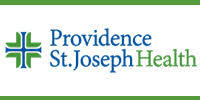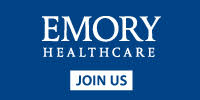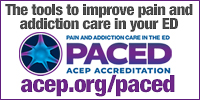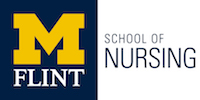- May 1,2025 | ISSN 1940-6967
- American Society of Registered Nurses ®
Featured Sponsors
The Nursing Workforce Is Traumatized
By Taylor Nichols, MD
The US healthcare system is facing an alarming exodus of professionals across disciplines, simultaneously causing and accelerating systemic collapse. This crisis stems largely from an inadequate understanding of the problems faced by nurses, leading to ineffective solutions that blame individuals rather than addressing systemic issues. Nurses are told to focus on "wellness" and "resilience" while the underlying factors of traumatic stress remain unaddressed.
Recognizing this as a systems-based trauma rather than an individual failure necessitates structural change. The Health Care Associated Traumatic Stress (HCATS) model goes beyond burnout or moral injury to offer a framework to understand the root causes of distress for nurses and develop targeted interventions that address the underlying issues of our failing system.
Beyond Burnout
In 1981, Christina Maslach defined "burnout" in relation to work by three specific factors: emotional exhaustion, depersonalization, and reduced personal accomplishment. The Maslach Burnout Inventory has since expanded to include cynicism and professional efficacy. However, framing the distress experienced in the course of providing care as "burnout" implies an individual problem rather than recognizing the systemic influences. The pervasiveness of purported burnout in healthcare -- with physician suicide rates as much as double the national average -- clearly indicates a systemic issue.
Nurses experience depersonalization through a loss of autonomy due to bureaucratic constraints, excessive workloads, and inadequate resources. Increasing consolidation and corporatization prioritizes efficiency over patient-centered care, treating both health professionals and patients as widgets in a production line, and leading to increasing exhaustion. Reduced time with patients and a decrease in individual impact on patient care leads to feelings of reduced personal accomplishment. While all these contribute to the harm of burnout in healthcare, these factors alone are insufficient to explain the exodus of health professionals.
Understanding Moral Injury
"Moral injury" has been proposed as an alternative to "burnout," describing the "mental, emotional, and spiritual distress people feel after 'perpetrating, failing to prevent, or bearing witness to acts that transgress deeply held moral beliefs and expectations.'" The organization Fix Moral Injury distinguishes burnout, which is described as stemming from operational overburden, from the relational rupture of moral injury.
While moral injury shifts focus somewhat toward systemic issues, the description remains insufficient to fully capture the breadth of the experiences that harm nurses. A broader definition beyond moral injury is required to adequately place responsibility on the systemic factors harming both patients and health professionals.
Administrative Harm
Coined by Walter O'Donnell in a 2022 article, the term "administrative harm" describes the adverse consequences of administrative decisions within healthcare. Healthcare professionals face evaluations through metrics that can potentially be at odds or directly contradictory with one another -- such as evaluating throughput and productivity alongside procedural outcomes and patient satisfaction -- while the administrators who generate and implement these systems rarely face similar accountability. These contradictions directly create suffering and harm experienced by nurses, while those who created the system avoid such consequences.
Primary and Secondary Trauma in Healthcare
In addition to burnout, moral injury, and administrative harm, nurses are often victims of both primary and secondary trauma in the course of providing clinical care.
Primary trauma includes direct physical and emotional harm experienced while providing care as well as other traumatic experiences to the individuals providing care, including those resulting from systemic and leadership failures, ethical dilemmas resulting from institutional policies, and issues related to resource allocation and under-staffing.
Secondary trauma recognizes that providing healthcare inherently involves witnessing the suffering of both patients and colleagues. Providing care within our fragmented and broken system generally requires participation in a system causing patient harm, which causes the moral distress identified as "moral injury" as well as the trauma of witnessing the harms suffered by others. Additionally, patients present to health professionals seeking care and treatment for ailments, which can include bearing witness to devastating conditions or injuries and death. This is especially true in emergency and critical care settings. While being entrusted to provide care in this setting is a profound privilege, the traumatic impact should not be ignored and must be addressed in any systems-level solution.
Time for a Paradigm Shift
To prevent healthcare system collapse, we need a paradigm shift in understanding why health professionals are leaving clinical medicine and direct patient care. The current exodus of health professionals is worsening already severe shortages across disciplines, threatening the stability of our entire system.
By better understanding the root causes of the distress impacting health professionals, we can develop targeted interventions that address the fundamental issues rather than just treating symptoms of a failing system. HCATS offers a more comprehensive framework than previous models, encompassing burnout, moral injury, administrative harm, and primary and multiple forms of trauma. By acknowledging the systemic roots of healthcare-associated stress, the HCATS framework redirects focus toward systems-level change rather than individual blame. This shift provides a foundation for developing interventions and policies to improve health professional well-being, enhance retention and morale, and ultimately elevate the quality of patient care.
Taylor Nichols, MD, is a board-certified physician in both emergency medicine and addiction medicine. He is the medical director of the harm reduction based non-profit addiction medicine clinic, Transitions Clinic of Sacramento. Additionally, he works in the emergency department, for residential treatment programs, and on hospital-based addiction consult services.
Articles in this issue:
- US Surpasses 1,000 Measles Cases In 2025, Second Worst Year Since Disease Was Declared Eliminated
- Everywhere Nurses Can Get Free Food & Discounts For National Nurse’s Week
- The Nursing Workforce Is Traumatized
- Nurse Retired At 28 After Selling Company For $12.5 Million—Now Enjoying ‘Family Sabbatical’
- What Do We Know About The Causes Of Autism?
- 11 Books Nurses Are Reading Right Now
- Why Nurses Are The True Heroes Of My 25-Year Medical Journey
Featured Sponsors
In This Issue
- US Surpasses 1,000 Measles Cases In 2025, Second Worst Year Since Disease Was Declared Eliminated
- Everywhere Nurses Can Get Free Food & Discounts For National Nurse’s Week
- The Nursing Workforce Is Traumatized
- Nurse Retired At 28 After Selling Company For $12.5 Million—Now Enjoying ‘Family Sabbatical’
- What Do We Know About The Causes Of Autism?
- 11 Books Nurses Are Reading Right Now
- Why Nurses Are The True Heroes Of My 25-Year Medical Journey
Archives
Masthead
-
Masthead
Editor-in Chief:
Kirsten Nicole
Editorial Staff:
Kirsten Nicole
Stan Kenyon
Robyn Bowman
Kimberly McNabb
Lisa Gordon
Stephanie Robinson
Contributors:
Kirsten Nicole
Stan Kenyon
Liz Di Bernardo
Cris Lobato
Elisa Howard
Susan Cramer
Leave a Comment
Please keep in mind that all comments are moderated. Please do not use a spam keyword or a domain as your name, or else it will be deleted. Let's have a personal and meaningful conversation instead. Thanks for your comments!















*This site is protected by reCAPTCHA and the Google Privacy Policy and Terms of Service apply.